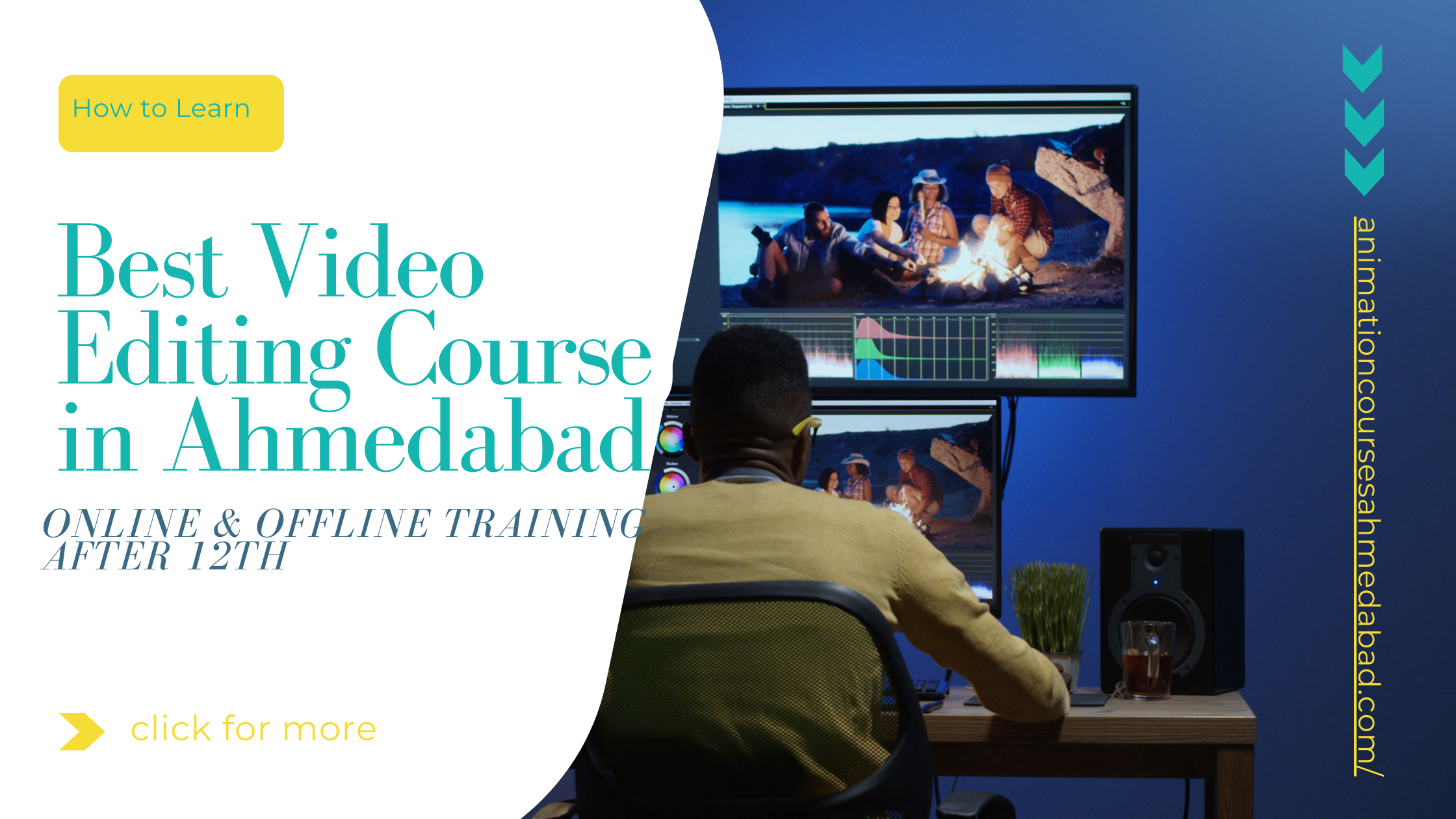
How to Set Up and Build The Best Configuration PC/Laptop For VFX and Animation
Have you ever wondered how breathtaking visuals in movies, the mesmerizing dance of animated characters, and the immersive worlds of video games are brought to life?
Prepare to uncover the hidden magic that powers these creative wonders – all through the lens of custom-built hardware designed for VFX, animation, and game design.
Imagine a canvas where your imagination dances freely, where pixels come alive to tell stories, and where virtual worlds are sculpted by your thoughts.
This is the realm of VFX, animation, and game design, a universe where creativity knows no bounds.
But behind every stroke of genius lies an unsung hero: your hardware.
Join us on a journey where we unravel the art of crafting a PC or laptop that becomes a vessel for your creativity, unlocking new dimensions of innovation and excellence.
With Cutting-Edge Hardware as Your Guide, Dive into the Digital Universe of VFX, Animation, and Game Design, Where Every Pixel Paints a 1000 Possibilities
We'll explore everything from identifying your hardware needs to assembling the perfect system and optimizing its performance.
Let's start!
Setting the Stage for Optimal Creativity
When it comes to the world of VFX, animation, and game design, the hardware you choose plays a crucial role in unlocking your creative potential.
The ability to bring imagination to life hinges on the power of your machine.
The Significance of Hardware in VFX, Animation, and Game Design
In the realm of VFX, animation, and game design, hardware is more than just a tool – it's the foundation upon which your creative vision is built.
The intricate details of a complex scene, the fluidity of character movements, and the immersive worlds of gaming all rely on the processing power and capabilities of your machine.
The hardware you choose can significantly impact your workflow efficiency and the quality of your final output.
What Are The Advantages of Building Custom Laptop/PC Configurations?
While off-the-shelf laptops and PCs might offer convenience, building a custom configuration tailored to your specific needs has distinct advantages.
As TechRadar's insightful piece "Should You Build or Buy Your Next PC?" suggests, building your computer gives you control over every component, enabling you to enhance performance for your creative endeavor.
This approach ensures that you're not confined by pre-selected hardware choices and allows for future upgrades, keeping your machine relevant as technology advances.
How to Build a Beast Computer To Perform Heavy VFX & Animation Projects?
Step 1: Identifying Your Creative Needs
Hardware Considerations for VFX Projects
When diving into VFX projects, rendering complex scenes with intricate details demands a high-performance CPU and GPU combination.
You should emphasize the significance of a capable graphics card and multi-core CPU to handle the intricacies of rendering, enabling you to bring life-like visuals to your projects.
Animation Workload Insights: Hardware Requirements
Animation, with its frame-by-frame intricacies, places unique demands on your hardware.
According to the School of Motion's exploration of the "Best Computer for Animation?" the animation process relies heavily on CPU power for tasks like rigging, character modeling, and handling multiple keyframes seamlessly.
Gaming Design Hardware Demands
Game design requires a different set of hardware considerations.
Intel's insights in "Building the Best PC for Game Development" stress the importance of a powerful CPU and a graphics card that can deliver high-quality visuals and run complex physics engines smoothly, ensuring an immersive gaming experience.
Step 2: Selecting Appropriate Components
Choosing the Right CPU for VFX and Animation
For both VFX and animation, a CPU with multiple cores and high clock speeds is essential.
Puget Systems' guide on "What CPU Should You Use for VFX Rendering?" delves into the nuances of CPU selection, highlighting the benefits of a multi-core processor in reducing rendering times and enhancing overall workflow efficiency.
GPU Requirements for Optimal Rendering
Your choice of GPU significantly impacts rendering performance.
How to Geek underscore the importance of a high-performance graphics card with ample VRAM, which facilitates the smooth handling of complex scenes, high-resolution textures, and real-time simulations.
Determining RAM Needs for Smooth Workflow
The right amount of RAM is crucial for maintaining a fluid workflow.
CG director's exploration of "How Much RAM Do You Need for Video Editing?" explains that maintaining a balance between capacity and speed is required, as it directly affects the handling of large project files and multitasking smoothly while rendering.
Storage Solutions for Creative Professionals
Storage is often overlooked but plays a vital role in managing large files.
Seagate's insights in "Building the Perfect Storage Solution for Video Production" delve into the benefits of SSDs and the speed advantages of NVMe drives, essential for quick access to your creative assets.
Step 3: Ensuring Display Quality and Color Accuracy
Monitor Selection for Precise Visuals:
The monitor you choose plays a critical role in the accuracy of your visual projects. It's important to select a monitor that prioritizes color accuracy, high refresh rates, and resolution.
Color accuracy ensures that the colors you see on your monitor match the intended colors of your project.
High refresh rates provide smoother motion, which is particularly important for animations. A higher resolution allows for greater detail and clarity in your work.
Step 4: Assembling Your System
Hardware Assembly Guidelines:
Assembling a PC requires careful attention to detail.
Following step-by-step instructions is essential to ensure each component is installed correctly.
Proper installation contributes to optimal performance and airflow within your system, preventing overheating and potential damage.
Ensuring Stable Power Delivery with PSU Sizing:
The power supply unit (PSU) is crucial for your system's stability. Choosing the right PSU size ensures that your components receive the necessary power without straining the PSU. This is important for preventing system crashes and hardware damage.
Sizing the PSU appropriately also accounts for potential future upgrades, so your system remains efficient as you evolve your setup.
Step 5: Optimizing System Performance and Cooling
Choosing the Right Operating System for Creativity:
Your choice of operating system affects your creative workflow. It's crucial to consider compatibility with creative software and tools.
Different operating systems have varying levels of support for the applications you'll be using.
Choosing the right one can enhance your efficiency and overall experience.
Effective Cooling Solutions for Intensive Workloads:
When working on complex and resource-intensive projects, your system generates heat.
Proper cooling solutions are essential to dissipate this heat and maintain stable performance.
The comparison between liquid cooling and air cooling helps you understand the trade-offs between these methods, ensuring your system remains cool under heavy workloads.
Step 6: Installing Essential Software
VFX and Animation Software Recommendations:
Choosing the right VFX and animation software tools is crucial for realizing your creative vision.
Recommendations for software tools aligned with your creative needs are essential.
These tools facilitate the creation of high-quality visual effects and animations, enabling you to bring your ideas to life effectively.
Game Design Tools and Engines:
Game development requires specialized tools and engines.
This section highlights the importance of selecting the right tools for creating captivating games.
Unity and Unreal are popular engines known for their capabilities in producing immersive and engaging game experiences.
Step 7: Regular Maintenance, Upgrades, and Elevating Your Skills
Maintaining Hardware Lifespan:
Regular maintenance practices, such as cleaning and dust prevention, significantly extend the lifespan of your components.
These practices ensure that your hardware continues to perform optimally over time, saving you from potential hardware failures and costly replacements.
Monitoring System Performance for Optimal Output:
Monitoring your system's performance helps you identify bottlenecks and areas of improvement.
Real-time insights provided by tools like CPU z allow you to track the performance of your CPU and memory, enabling you to maintain efficient operations and address any issues promptly.
Upgrading Components for Evolving Needs:
Technology advances quickly, and your creative needs may change over time.
This section emphasizes the importance of upgrading components to keep up with evolving demands.
Upgrading your graphics card, for example, can ensure your system remains capable of handling the demands of future projects.

FAQ ( Animation & VFX Video Editing)
Q1: How does the amount of RAM impact my creative work?
RAM (Random Access Memory) affects how smoothly your computer runs applications. More RAM allows you to work with larger files and multiple applications simultaneously without slowdowns. This is crucial for tasks like video editing, rendering, and complex 3D animations.
Q2: What is CPU performance, and why is it important for creative tasks?
The CPU (Central Processing Unit) is the "brain" of your computer. CPU performance impacts how quickly your software processes data. Creative tasks like rendering, simulations, and compiling require strong CPU performance for faster completion and smoother workflows.
Q3: How much RAM do I need for animation and VFX work?
The required RAM depends on the complexity of your projects. For smooth animation and VFX work, 16GB is a good starting point. However, for larger projects and professional work, 32GB or more is recommended to ensure smooth multitasking and efficient file handling.
Q4: What factors should I consider when choosing a CPU for creative work?
When selecting a CPU, consider the number of cores and threads it has. More cores and threads lead to better multitasking and faster processing. Also, check the clock speed, as higher clock speeds improve single-threaded performance, which is important for certain creative tasks.
Q5: Should I prioritize CPU or RAM when building a workstation for creative projects?
Both CPU and RAM are crucial for a balanced workstation. However, if you work with large files and complex projects, prioritize RAM for smoother multitasking and handling of large datasets. A powerful CPU is also essential for quick rendering and processing.
Q6: Should I invest in a higher clock speed CPU or more cores for animation and video editing?
For animation and video editing, balance is important. Animation benefits from higher clock speeds for real-time previews, while video editing benefits from more cores for faster rendering. Look for CPUs that offer a good combination of both aspects.
Q7: How can I optimize RAM and CPU usage for creative software?
Close unnecessary background applications to free up RAM. Configure your software to utilize available CPU cores effectively. Some software also allows hardware acceleration, utilizing the GPU for certain tasks, further optimizing performance.
Q8: What role do RAM and CPU play in 3D modeling and sculpting software?
3D modeling and sculpting involve manipulating complex geometry. Higher RAM helps handle detailed models, while a powerful CPU ensures smooth real-time previews and responsiveness as you work on intricate designs.
Master Your Skills with Kshitij Vivan Institute's VFX and Animation Course
Kshitij Vivan's Specialized VFX Animation course offers expert guidance, practical insights, and industry-relevant skills to excel in the fields of VFX, animation, and game design.
It's an opportunity to learn from professionals and gain the knowledge needed to succeed in these creative disciplines.
Conclusion:
In the dynamic realm of animation, VFX, and game design, the foundations of your creative journey lie in meticulous hardware decisions.
From the precision of your monitor to the power of your CPU and the capacity of your RAM, each choice influences the quality and efficiency of your artistic expression.
Color accuracy, stable power supply, efficient cooling, and cybersecurity measures converge to safeguard your vision.
Through ongoing maintenance, strategic upgrades, and skill enhancement, your hardware evolves alongside your creative needs.
Seize the momentum of technological progress as a partner in innovation, and forge ahead with the confidence that your well-equipped system catalyzes unlocking your fullest creative potential.
In this synthesis of technical acumen and artistic imagination, you stand poised to thrive in the captivating realms of VFX, animation, and game design.



